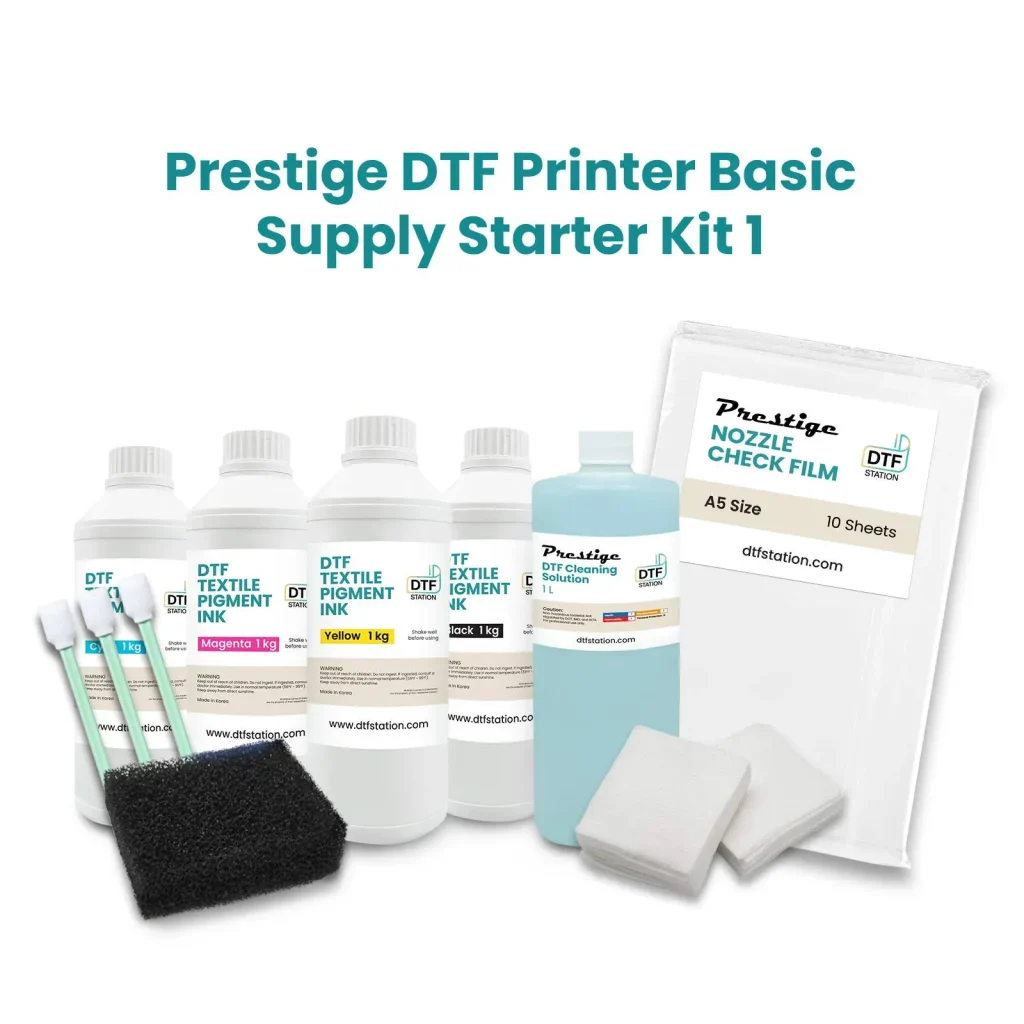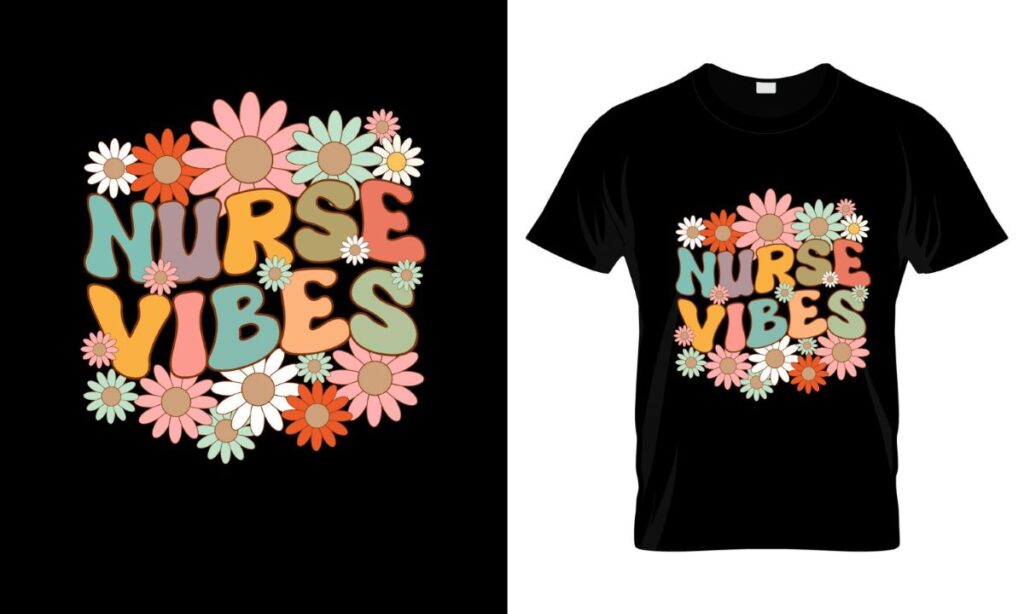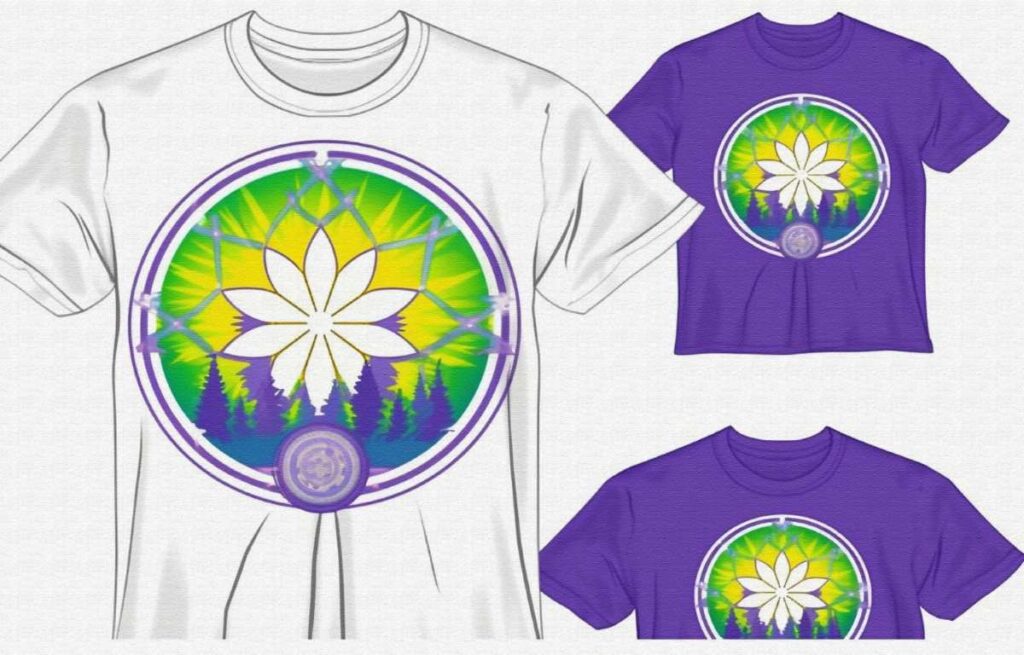DTF supplies are essential for anyone looking to dive into the vibrant world of Direct to Film printing. This innovative printing technique allows creators to achieve stunning, high-quality designs on various fabrics, captivating audiences with colorful and durable prints. However, to unlock the full potential of DTF transfer prints, it is crucial to have the right tools, including a reliable DTF printer, specialized DTF ink, premium transfer film, and a heat press. In this guide, we will explore the top 10 DTF supplies you need to ensure seamless and professional results in your printing endeavors. With the right mix of equipment and materials, your custom apparel creations are bound to stand out in the competitive market.
When discussing the essentials for successful garment printing, Direct to Film (DTF) materials play a pivotal role. This approach, often referred to as transfer printing, employs advanced techniques to create vivid imagery on textiles, making it a favored choice among designers. Vital components in this process include high-quality printing machinery, specialized pigments, and the right type of film that can withstand the rigors of heat application. By integrating these tools—such as a heat press and adhesive powders—into your workflow, you can achieve expert-level results that not only impress but also endure through time. Understanding these key elements will not only optimize your print quality but also enhance your overall production efficiency.
Understanding the DTF Printer: Your Key to Success
When it comes to Direct to Film printing, the DTF printer is undeniably the heart of the operation. It’s essential to choose a printer that not only meets your quality expectations but also aligns with your workflow. Many professionals swear by models like the Epson L1800, which offers exceptional print resolutions and reliability. Selecting the right printer involves more than just high resolution; you should consider factors like print head technology and the overall ease of use. A printer that allows for versatile media handling can greatly enhance your productivity.
Another crucial aspect to consider is the compatibility of your DTF printer with various inks and films. Since DTF printing utilizes a unique process, having a printer that can work optimally with quality DTF inks significantly impacts your output. Ensure your chosen printer can handle the intricacies of Direct to Film transfer to avoid common pitfalls like ink clogging or poor film adhesion. This upfront investment in a reliable DTF printer sets the foundation for your entire printing process.
The Role of DTF Ink in Vibrant Transfers
DTF ink plays a pivotal role in achieving the vibrant colors and sharp details that customers expect from custom apparel. It is crucial to select inks that not only deliver color intensity but also durability. Opting for pigment-based DTF inks typically yields better results, as they provide superior washability and longevity. This means that the designs remain bold and intact even after multiple washes, which is a significant consideration for any apparel business.
Investing in high-quality DTF ink is a smart move since it directly correlates with the durability of your transfers. The right ink formulation leads to enhanced adhesion to the transfer film and fabric, ensuring that colors are more resistant to fading. As the market for DTF printing grows, it becomes imperative to stay updated with the latest ink technologies and formulations that enhance not only color vibrancy but also eco-friendliness without sacrificing performance.
Choosing the Perfect Transfer Film for Your Projects
Selecting the right transfer film is one of the most critical steps in the DTF printing process. High-quality transfer films, specifically designed for DTF applications, can significantly impact the adhesion and fidelity of your prints. Look for films that are coated to ensure ink compatibility and enhanced bonding with fabrics. A premium transfer film contributes to a smoother transfer process, which can make a substantial difference when you are working with intricate designs.
Moreover, the choice between transparent and white transfer film can affect the visibility and appearance of the final print. Transparent films are ideal for lighter fabrics, allowing the garment color to complement the design without overpowering it. Conversely, white transfer films are better suited for darker fabrics, ensuring that the colors stand out vividly. By understanding the characteristics of different transfer films, you can make informed choices that elevate the quality of your prints and satisfy client expectations.
Maximizing Adhesion with Quality Adhesive Powder
In the realm of DTF printing, adhesive powder plays a critical role in ensuring that your designs adhere seamlessly to fabric. Once you’ve printed your design onto the transfer film, applying a high-quality adhesive powder helps form a robust bond between the film and the fabric. This bonding not only strengthens the longevity of the print but also minimizes issues like peeling or cracking after several washes.
When choosing adhesive powder, consider its composition and application process. A superior adhesive powder that melts correctly during the heat press application can prevent common errors that lead to transfer failures. Make sure to experiment with different types and brands to find the adhesive powder that works best with your DTF printer and inks to ensure the highest quality results.
The Importance of a Reliable Heat Press in DTF Printing
A reliable heat press is essential for the effective application of DTF transfers. The right heat press will allow you to control temperature and pressure, ensuring that the adhesive adheres properly to the fabric. Look for models with adjustable settings that cater to different types of materials and transfers, facilitating various projects with ease. An effective heat press enables you to achieve consistent results across different fabrics and designs.
Additionally, the quality of heat distribution is vital in preventing scorching or uneven transfers. Investing in a heat press that offers even heating will enhance your transfer quality and productivity. Regularly maintaining your heat press is also important; ensure that the plates are kept clean and free of residues to prevent contamination of future prints. Quality heat presses are designed to last, making them a fundamental component in any successful DTF printing operation.
Software Solutions for Creating Stunning DTF Designs
Graphic design software is an indispensable tool in the DTF printing process, allowing artists and business owners to create captivating designs ready for printing. Programs like Adobe Illustrator and CorelDRAW provide robust features that streamline the design process and enable precise manipulations necessary for high-quality transfers. Opting for software that supports RGB color profiles is crucial, as DTF printing relies on precise color reproduction to ensure that designs reflect their digital counterparts.
Moreover, quality design software often includes optimization tools that can enhance print quality by correcting colors and refining graphics output. Being familiar with the various options available allows you to choose software that best aligns with your workflow and artistic style. Investing in the right graphic design software can be just as important as the other supplies, as the quality of your designs directly influences the success of your DTF printing projects.
Frequently Asked Questions
What is a DTF printer and how does it work?
A DTF printer is a specialized type of printer designed for Direct to Film (DTF) printing. It works by printing designs onto transfer film using DTF ink, which is then bonded to fabric using heat and pressure from a heat press. This process allows for vibrant, durable prints on various textile surfaces.
What type of DTF ink should I use for best results?
For optimal results in DTF printing, it’s recommended to use high-quality pigment-based DTF ink. These inks provide vibrant colors, excellent washability, and longevity, ensuring your fabric designs remain bright and intact over time.
How important is transfer film in the DTF printing process?
Transfer film is crucial in the DTF printing process as it serves as the medium that carries the DTF ink to the fabric. High-quality transfer film with a proper coating enhances adhesion and ensures that prints transfer smoothly while leaving no residue behind.
What features should I look for in a heat press for DTF printing?
When choosing a heat press for DTF printing, look for adjustable temperature settings, time control, and consistent heat distribution. These features will help you apply the right amount of heat and pressure, which is essential for achieving high-quality DTF transfers.
How does adhesive powder work in DTF printing?
Adhesive powder is applied to the printed DTF film before transferring it to the fabric. It helps bond the ink to the fabric effectively, resulting in durable transfers that can withstand multiple washes without peeling or cracking.
What is the role of graphic design software in DTF printing?
Graphic design software is essential for creating print-ready designs for DTF printing. Programs like Adobe Illustrator or CorelDRAW allow users to handle RGB files and design vibrant graphics that translate well onto fabric, ensuring professional-quality results.
| Supply | Description |
|---|---|
| DTF Printer | Core component for the DTF transfer process; look for high resolution and reliability, e.g., Epson L1800. |
| DTF Ink | Pigment-based inks that offer vibrant colors and durability; essential for high-quality prints. |
| Transfer Film | Coated films that enhance adhesion and prevent residue; crucial for successful transfers. |
| Adhesive Powder | Bonds ink to fabric; high-quality powder is key for durability of the transfer. |
| Heat Press | Essential for applying transfers; needs adjustable settings and consistent heat. |
| Software | Graphic design tools for creating print-ready designs; programs like Adobe Illustrator recommended. |
| Cleaning Solutions | Helps maintain printer heads and prevent clogging; important for consistent quality. |
| Protective Sheets | Shields designs during transfer; prevents scorching and ensures quality. |
| Printable White or Transparent Film | Essential for achieving quality transfers; different types for light or dark fabrics. |
| Heat Resistant Tape | Secures designs pre-pressing; prevents misalignment and ensures accuracy. |
Summary
DTF supplies are essential for anyone engaged in custom apparel and textile printing. With the right tools, including printers, inks, and heat presses, you can achieve vibrant and durable designs on various fabrics. Understanding the importance of each supply, along with current industry trends, enables both hobbyists and business owners to elevate their transfer printing processes. By investing wisely in high-quality DTF supplies, you ensure not only the quality of your prints but also the longevity and success of your creative endeavors.



